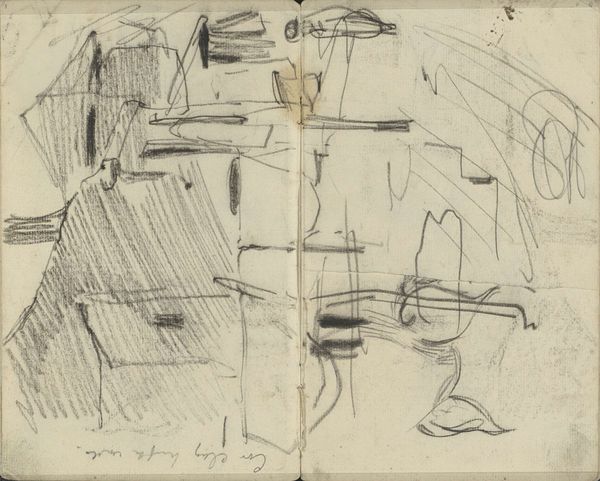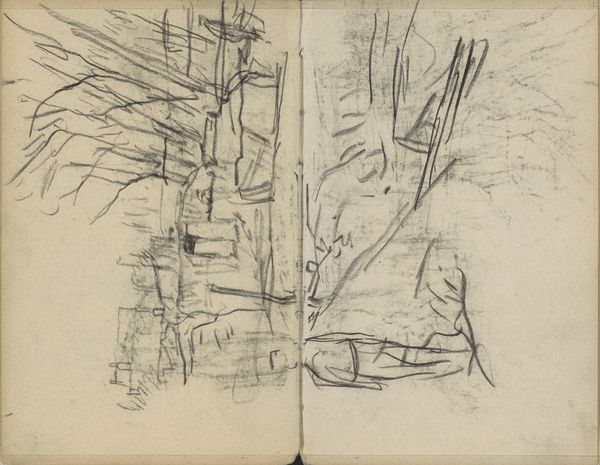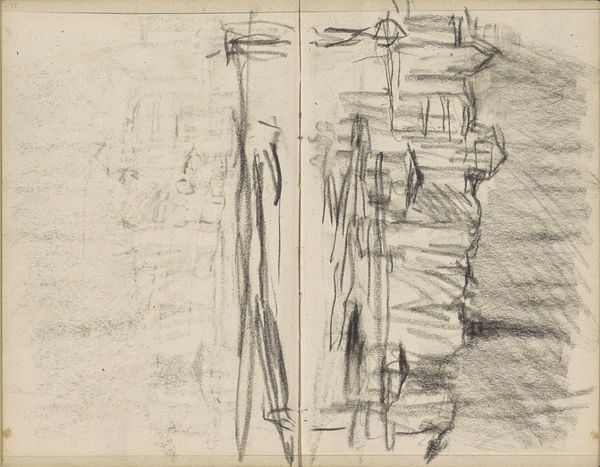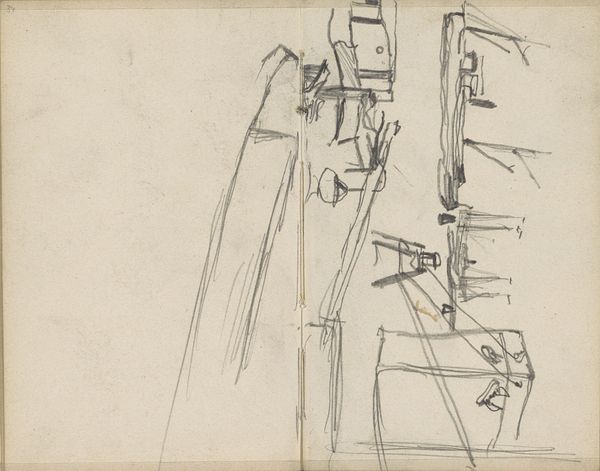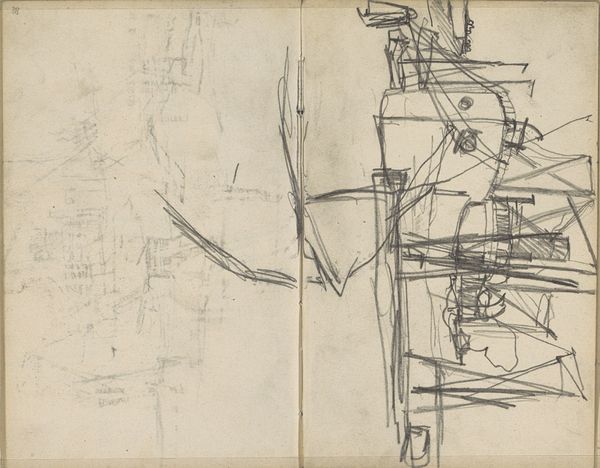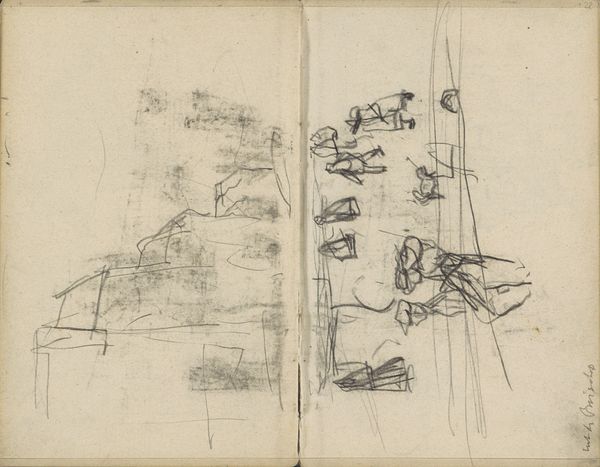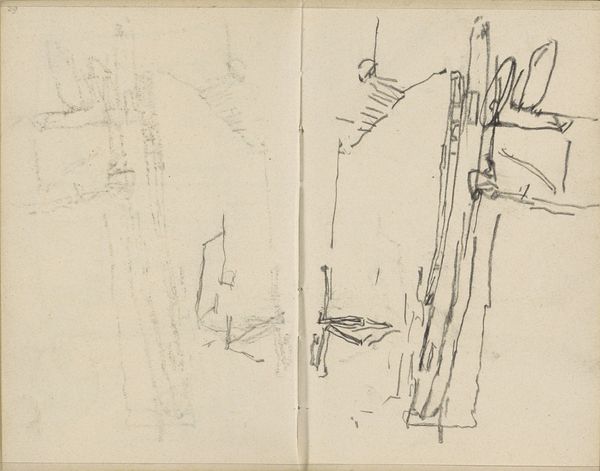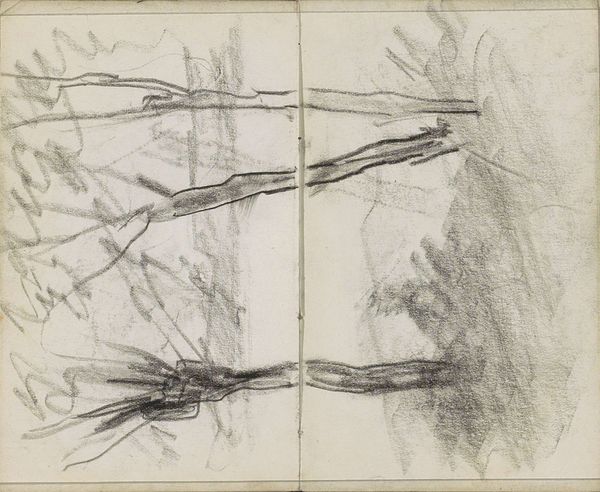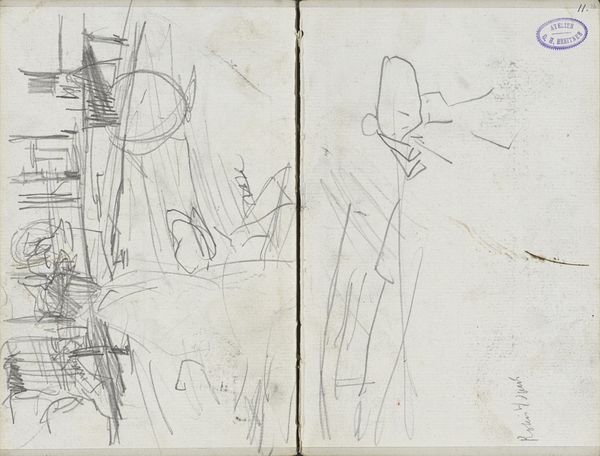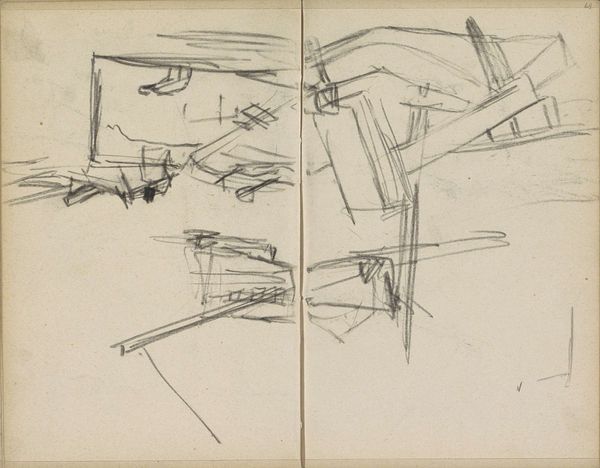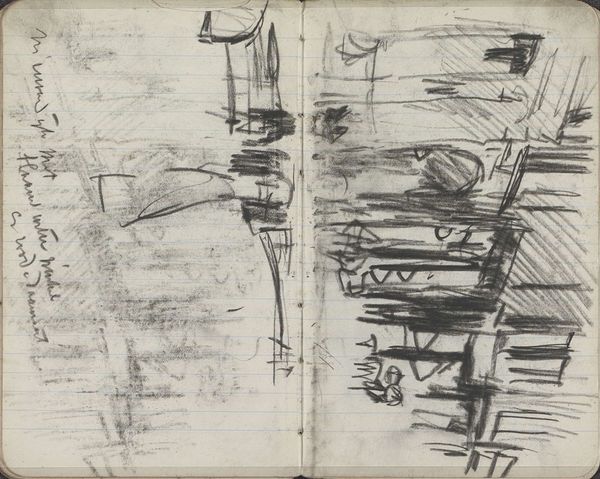
Copyright: Rijks Museum: Open Domain
Curator: Breitner's sketch, "Gezicht op de Pijpenmarkt te Amsterdam," likely made between 1902 and 1914, captures a cityscape in quick pencil strokes. What is your immediate reaction to it? Editor: There's a chaotic energy in this sketch, a real sense of the bustling market rendered in a raw and immediate way. It feels unfinished, a snapshot more than a portrait. Curator: Breitner was indeed known for capturing fleeting moments of urban life. The Rijksmuseum holds this drawing, executed with rapid lines in pencil. The medium and method speak to his fascination with immediacy, right? Editor: Absolutely. The sketch's looseness and raw quality are captivating, and remind me of similar market scenes in other European cities; chaotic energy condensed to symbolic building blocks. Curator: Notice how the composition seems almost haphazard, yet manages to convey the density of the market. Breitner emphasizes the repetition of forms: stalls, figures... It gives a visual language to urban consumption. Editor: The stalls and figures evoke a strong association to abundance, especially the food markets depicted throughout Dutch Golden Age art. This work condenses themes of trade and urban dynamism with clear lines and almost anxious energy. Curator: Given Breitner’s social circle, and the emphasis in Realism and Impressionism to picture everyday life, what kind of person was experiencing this scene? This marketplace was a social and economic engine for working-class families in the city. Editor: The imagery, even in sketch form, carries a weight of cultural significance, like layers of history accumulating into something recognizable. Curator: Looking closely, one can discern a deliberate reduction of the cityscape into rudimentary forms. This economy of line reveals the process of selection. It underlines what the artist deems most valuable to depict from a material and historical perspective. Editor: I am drawn to how the symbolism evokes these associations between cultural memory, class dynamics and history, making them resonate powerfully even today. Curator: Breitner’s work serves as an index of modernity, capturing the essence of his environment for our examination and interpretation, even to this day. Editor: Indeed, this raw sketch leaves us with much to consider.
Comments
No comments
Be the first to comment and join the conversation on the ultimate creative platform.

